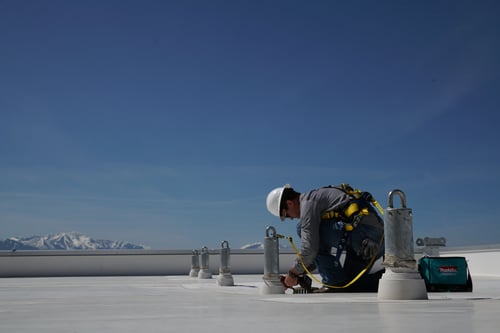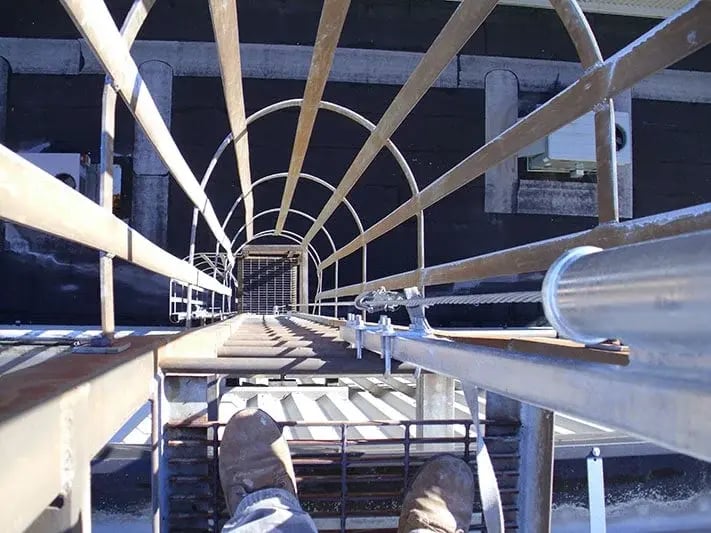Hospitals and Medical Centers
The boiler systems, hoppers, pipe racks, and extensive roof systems found in most hospital and medical center settings present a number of fall hazards that need mitigation for maintenance personnel to perform job duties in a safe manner. Providing safe access to these areas requires a comprehensive fall prevention strategy, which includes the proper mix of fall protection equipment, a descent and rescue plan, personnel training, and partnering with a fall protection company that appreciates the unique nature of the potential fall hazards associated with the institutional buildings associated with the medical market.
We are a complete turnkey provider of fall protection systems designed for hospitals and medical centers and have the years of design and installation experience in this market sector. Contact us for expert assistance with your fall protection and related safety requirements.

Fall Protection Solutions
Design Considerations
For hospital rooftop installations, DFP can design and install a variety of non-penetrating guardrail systems to prevent leaks. Regardless of location or mounting style, the top rail must be rated to withstand a force of at least 200lbs; the mid-rail must be rated at 150lbs. Guardrail systems may be powder-coated safety yellow for high visibility or utilize custom colors to match or blend into the surroundings.
Single point anchors are rated at 5,000 or 10,000lbs or 2 times the applied load in the event of a fall by a qualified person. A single point anchor may be designed for single or dual tie-off as long as each user attaches to a designated D-ring. Multiple users should never tie off to the same D-ring under any circumstances.
Rooftop single point anchors can be used in conjunction with a variety of deck substrates including metal standing seam, rubber membrane, or concrete. A SPA is designed to protect workers within a 30 degree conical cone; moving outside the intended coverage area increases the likelihood of coming into contact with structure below the work area in the event of a swing fall.
Horizontal lifelines designated for rooftop use are typically constructed from corrosion resistant stainless steel components for maximum service life. Our fall protection safety specialists can engineer a horizontal lifeline system to accommodate the special characteristics of your rooftop, from corners to the absence of pre-existing anchor points and more.
Although the horizontal lifeline system may seem simple in function and design, special care must be taken to account for the loads on various anchor points and deflection in the event of a fall. Each anchor point must be secure enough to withstand the forces associated a fall and a thorough review of the work area is needed to ensure that a worker will not strike pipes, equipment, or other surfaces when falling. Load and deflection rates are determined by a number of factors, including pre-tension of the cable, length of the area spanned by the horizontal lifeline, and the number of workers connected to the system.
All boiler and hopper systems in hospital settings have the potential to present confined space applications and must also be equipped with OSHA approved confined space rescue equipment in the event that an employee is not able to exit the hazardous area without assistance.

b-1.jpg?width=1368&height=1340&name=Rail%20(175)b-1.jpg)








